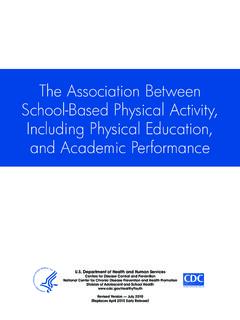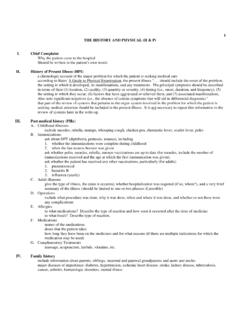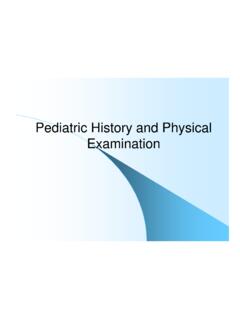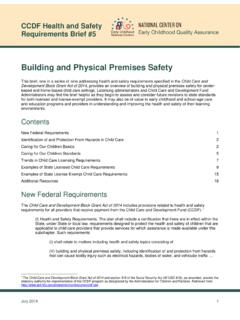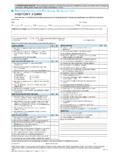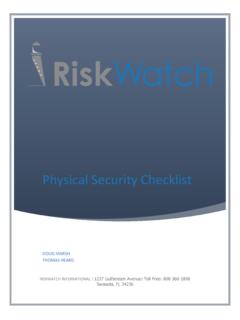Transcription of Physical Review Style and Notation Guide
1 Physical ReviewStyle and Notation GuideInstructions for correct Notation and stylein preparation of REVTEX compuscripts and conventional manuscriptsCompiled and edited byAnne Waldron, Peggy Judd, and Valerie MillerPublished byThe American Physical SocietyFirst Edition July 1983 Revised February 1993 Minor Revision June 2005 Minor Revision June 2011 Copyright 1993, by The American Physical SocietyPermissionis granted to quote from this journal with the customary acknowledgment of the source. To reprint a figure, tableor other excerpt requires, in addition, the consent of one of the original authors and notification of copying feeis required when copies of articles are made for educational or research purposes by individuals or libraries (including thoseat government and industrial institutions).
2 Republicationor reproduction for sale of articles or abstracts in this journal ispermitted only under license from APS; in addition, APS may require that permission also be obtained from one of the inquiries to the APS Administrative Editor (Editorial Office, 1 Research Rd., Box 1000, Ridge, NY 11961). Physical Review Style and Notation GuideAnne Waldron, Peggy Judd, and Valerie Miller(Received:)ContentsI. INTRODUCTION2II. Style INSTRUCTIONS FOR PARTS OF A MANUSCRIPT2A. Title ..2B. Author(s) name(s) ..2C. Author(s) affiliation(s) ..2D. Receipt date ..2E. Abstract ..2F. Physics and Astronomy Classification Scheme (PACS) indexing codes ..2G. Main body of the paper sequential organization.
3 21. Types of headings and section-head numbers ..32. Reference, figure, and table numbering ..33. Equation numbering ..3H. Acknowledgments .. (es) .. and references ..41. Footnotes introductory ..42. Footnotes reference citations ..43. Footnotes nonparenthetical side remarks ..44. Footnotes tables and figures ..4K. Tables ..81. Sizes ..82. Captions ..83. Lines and space ..94. Headings ..95. Entry lineup ..10L. Figures ..111. Types of figures ..112. Designing and labeling figures ..113. Identifying figures ..124. Figure captions ..12 III. Style INSTRUCTIONS FOR GRAMMAR, PUNCTUATION, SPELLING, HYPHEN-ATION, AND ABBREVIATION OF UNITS12A.
4 Grammar and punctuation ..121. Text and math as sentences ..122. Use of the comma ..123. Use of parentheses ..134. Use of the colon ..13B. Spelling and hyphenation Guide ..13C. Abbreviation rules ..14D. Units ..14IV. INSTRUCTIONS FOR COMPOSING MATHEMATICAL MATERIAL15A. Characters available ..151. Alphabets ..152. Numbers ..153. Symbols ..154. Diacritical signs in math ..165. Subscripts and superscripts ..161(March 8, 2012)B. Abbreviations in math ..161. Abbreviations designating mathematical functions ..162. Abbreviations in subscripts and superscripts ..17C. Mathematical expressions ..171. When to display ..172. Punctuation ..173. Equation breaking (multilinear equations).
5 174. Equation numbering ..18D. Bracketing ..191. Grouping sequence ..192. Specific bracket Notation ..193. Specialized Notation ..19E. Additional Style guidelines ..191. Placement of limits ..192. Fractions ..193. Multiplication signs ..204. Mathematical terms ..20 APPENDIX: JOURNAL TITLE ABBREVIATIONS212 Physical Review Style and Notation GuidePhysical Review Style and Notation GuideI. INTRODUCTIONThis Notation Guide represents a compendium of gen-eralPhysical Reviewstyle rules to help authors whenpreparing a paper for submittal as a REVTEX com-puscript or a conventional manuscript. It is essential thatnotation be consistent and standardized so that all pa-pers can be processed Guide has been arranged so it can be used as areference manual.
6 Differences or exceptions for specificjournals may exist, and may be conveyed to the author bythe appropriate journal editor. Authors should consultthe Information for Contributors section published in thefirst issue of each volume ofPhysical Review . Some of thejournals may also have additional instructions for prepar-ing manuscripts on specialized subjects, obtainable fromthe Style INSTRUCTIONS FOR PARTS OF AMANUSCRIPTThe basic parts of a manuscript are discussed parts which must be included in every manuscriptare marked with an *TitleTitles are to be simple and concise. Begin the firstword with a capital letter; thereafter capitalize onlyproper or trade names and chemical symbols.
7 The use ofnonstandard abbreviations and acronyms is not words (a, on, an, the, etc.) at the beginningof the title should be *Author(s) name(s)It is preferable to use only one form of your name asan author in all of your *Author(s) affiliation(s)Write out the names and postal addresses of all institu-tions in full. Include box numbers, apartment numbers,or street numbers only if necessary for effective mail de-livery. ZIP codes are required for addresses. [Note:If you expect to be contacted by readers, provision ofa complete mailing address in the bylines (including de-partment) is advantageous.]D. *Receipt dateThe received date indicates the date the manuscriptwas received by the scientific editor.
8 This date will beverified by the editor and will appear in the printed *AbstractAn abstract must accompany each manuscript. Theabstract should consist of one paragraph and be com-pletely self-contained. It cannot contain numbered ref-erences; incorporate such information into the abstractitself. Use this form:Further information is available [A. B. Smith, Phys. Rev. A26, 107 (1982)].Displayed equations and tabular material are discour-aged. Define all nonstandard symbols and *Physics and Astronomy Classification Scheme(PACS) indexing codesEach manuscript must be assigned indexing codeswhich are used in computerized secondary informationservices. See alsoPhysical Review Letters, 14 December1992, for code indexing information.
9 In general, followthese guidelines.(1) Choose no more than four index number codes.(2) Place your principal index code first.(3) Always choose the lowest-level code available.(4) Always include the check indexing will be verified by the journal scientific *Main body of the paper sequentialorganizationThe body of the paper (text and math) should be di-vided into sections with the use of section headings andsubheadings. However, headings are not always required;for short papers headings may not be necessary or per-mitted. Equations, tabular material, figures, and refer-ences should also follow a sequential numerical scheme inorder to ensure a logical development of subject Review Style and Notation Guide 31.
10 Types of headings and section-head numbersThe major divisions in a paper are indicated by prin-cipal headings [level (1)]. Each major section can be fur-ther divided by subheadings [levels (2) (4)]. Each subdi-vision of a heading indicates a more specific following list indicates the four different types ofsection headings and the appropriate Style for each. Inall headings symbols and abbreviations should appear asthey would in text. Refer to a recent issue ofPhysicalReviewfor (1)I. PRINCIPAL HEADINGC entered heading, all capital letters, preceded by a ro-man numeral and a (2)A. First subheadingCentered heading, first word capitalized, preceded bya roman capital letter and a (3)1. Second subheadingCentered heading, first word capitalized, all italic, pre-ceded by an arabic numeral and a (4)(a) Third following a paragraph in-dentation, first word capitalized, all italic, preceded by alowercase letter or number in Reference, figure, and table numberingIn the body of the paper all references, figures, and ta-bles must be cited consecutively in numerical order.


